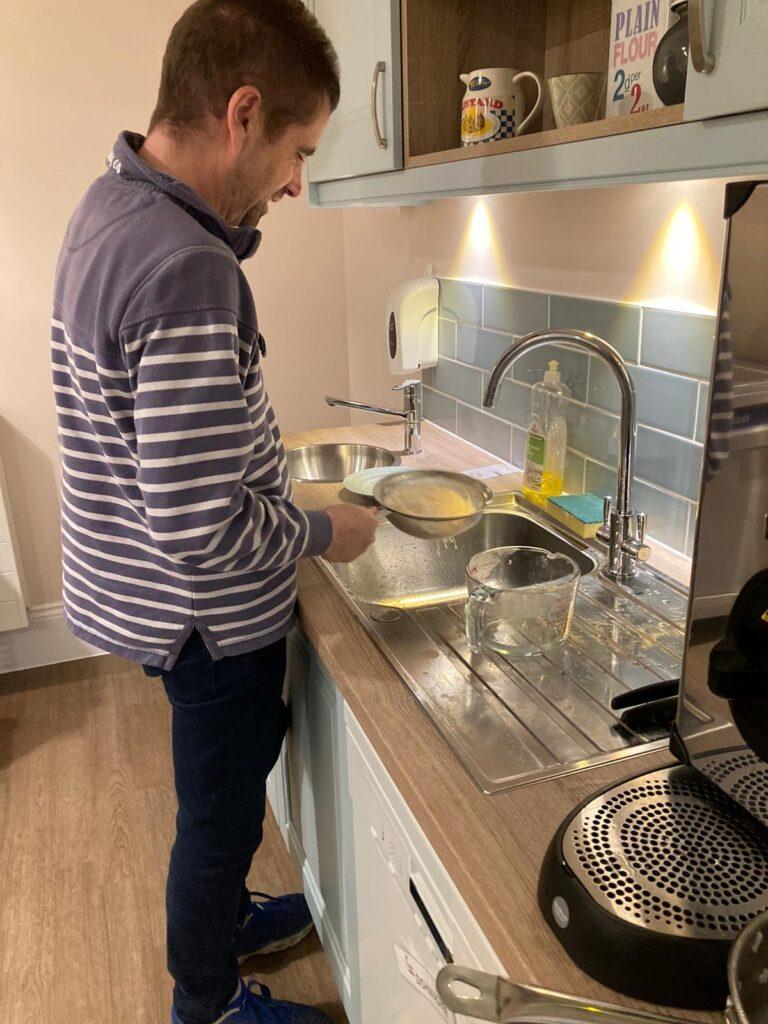In August, John was running a successful 11+ education company with wife, Jan, and was outside with some pupils playing football during the break-time, when he fell and hit his head hard on the ground. He got up but immediately dropped to the floor and the Caretaker who witnessed the incident could see an ambulance was needed. John had suffered a traumatic brain injury and was blue-lighted to Salisbury hospital where they took emergency steps to stem the blood flow. Later that day, he was moved to Southampton General Hospital’s neuro ward where Jan was told he was seriously ill, would need immediate surgery and may not survive…
After six days in an induced coma it was a further 5 days before he came round and a specialist nurse, Erica, brought along an iPad so that he could see his family. Jan says “We were so worried and didn’t even know if he would be able to speak … his first words to me and our three children were ‘Hello family, lovely to see you’ … a profound moment .”
Five weeks later John transferred back to Salisbury hospital where he continued to improve while Jan and the family adjusted to his ongoing needs. Jan had been working tirelessly keeping the company going, caring for their three children and sourcing step down rehabilitation to enable John to come home safely.
They managed to get CCG funding for an intensive six week rehab package at Bramshott Grange, Liphook, tailored to his goals and rehab needs. The left side had been affected and there was a lot to do; ambitious goals were set. Although John could now stand and could walk around with one person, it was a far cry from the triathlons he used to do as a keen runner. Occupational therapy tasks in the kitchen and some FES (Functional Electrical Stimulation) formed part of the programme. John had running 5K in his sights and he was intent on doing what was necessary.
The intensive hands-on therapy combined with targeted neurotechnology help to deliver high-dose therapy to optimise progress and recovery timeframes. John admits he often struggled with the Occupational Therapy hand challenges, but the up-beat enthusiasm from the therapy team helped him focus on the real-world problems the tasks would help him achieve and he kept going. Much fun was had skipping along the corridors, to the amusement (and amazement) of the other residents.
The team worked towards the 5K goal and this involved lots of outdoor jogging (and resulted in plenty of muddy therapists)! Keen to test out his credentials as an educator, as part of his cognitive and speech and language therapy he delivered a talk to the therapists all about Bitcoin! Having studied maths at Cambridge and then having had a career in IT, primarily in data visualisation, he says that the stats provided by the technology played an important role, evidencing his progress, which he found meaningful and motivating.
Emotional lability (exaggerated changes in mood) is a common feature in brain injury and at Bramshott, John was supported by the neuropsychologist as part of a holistic approach. One of the lasting effects of the accident is the psychological impact it has had. With no memory of his own, he has to piece it together from the experiences of family/ others involved and worries about the impact upon them a lot, finding it very upsetting to revisit. However, there are days when he ‘can just forget about it’ and he reports that his head is clearer, he is no longer taking daytime naps; fatigue management is key. He can now run 5K in around 30 minutes! “Life is getting back to normal. It’s a fantastic feeling!” What now? Online teaching has resumed and the rehab continues with the current challenge being moving from side-to-side. Meanwhile, his family and all at Hobbs Rehabilitation give John top marks!

